
billa-ibaia-bao Basque river cove? Population - 345,821.
Sep 2023+
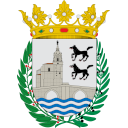
Ongi etorri to Bilbao, thanks very much, the proud taxi driver taking the route in over the Salbe Bridge when he didn't really need to. It's a wonderful 'Welcome to' with the glistening Guggenheim on the right, like you didn't know already, but more on that in a minute.

It's a funny old language the Basque, roundly spoken in this part of Northern Spain and totally unrelated to any other tongue elsewhere or anywhere, they say. That Euskara phrasebook is of no use to no one because you thought Portuguese was unpronounceable?
No, It will be on a strictly por favor and gracias basis from now on in since a badly enunciated mesedez or eskerrik asko might accidentally insult someone, actually.
The best that can be done is an acceptable stab at txakoli, as in Cha-cha-cha for fans of Strictly, the local vino blanco that's served absolutely everywhere and it'll rightly be frowned upon if you express a preference for a Pouilly-Fumé, say.
Right then, that's the language lesson over so what about the geography? Two sides to this tale of two cities, old and new although the 19th century isn't all that new. It is, however, much more modern in places than imagined, the Guggenheim excepted.
There are 40 floors to the Iberdrola Tower, the regional HQ of Spain's Electricity Board and various other corporate tenants.

The residential pairing at Bizkidetasun Plaza might only have a measly 23 storeys but it still has a whiff of a mini- Canary Wharf?
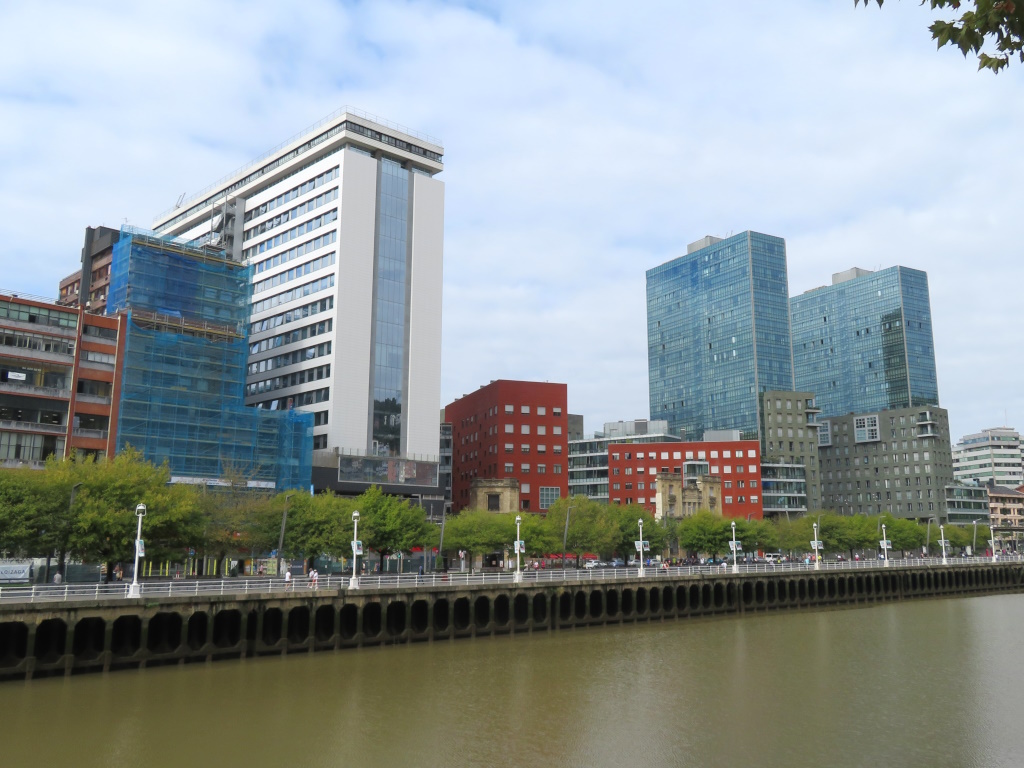

When it's said a 'measly 23', that's a joke, of course, and SlyBob would be reluctant residing anywhere up and above the seventh and yes, that'll be the old vertigo.
All of this not far from the Guggenheim Museum so, while we're here, let's nip this elephant in the bud. Opened in 1997 after six years in the planning and making, this was a successful attempt to transform the previously industrial location into an international, cultural destination.
There are lots of words elsewhere as to the whys and hows of costs and construction of what is essentially a complex-sounding, franchise arrangement with the Guggenheim Foundation.


All that this pair know for sure is that there's a giant spider and a puppy made of poppies outside!
Inside, and for a not unreasonable-enough £20 per pair, ages permitting, you can spend not much more than half-an-hour staring at the unfathomable juxtapositioning of things.
This much was learnt at a couple of their other branches in New York and Venice, which isn't meant in an 'Oooh! Look at us' kind of way, by the way. It's not that SlyBob are ticking off Guggenheims, neither, they just seem to follow you round, and is why the tally of interior experiences stayed at two today.
If you think that makes for a pair of philistines, you're probably right but it's just that we prefer a proper gallery with proper paintings and that in it but more on that in a minute.

Besides, there's some artificial fog being created for some mystifying reason and there's a giant spider outside, remember?
It's time to head into town and how better than by the back of Casilda Iturrizar Park, which contains a good old duck pond and what's technically, but not recognisably, a pergola.

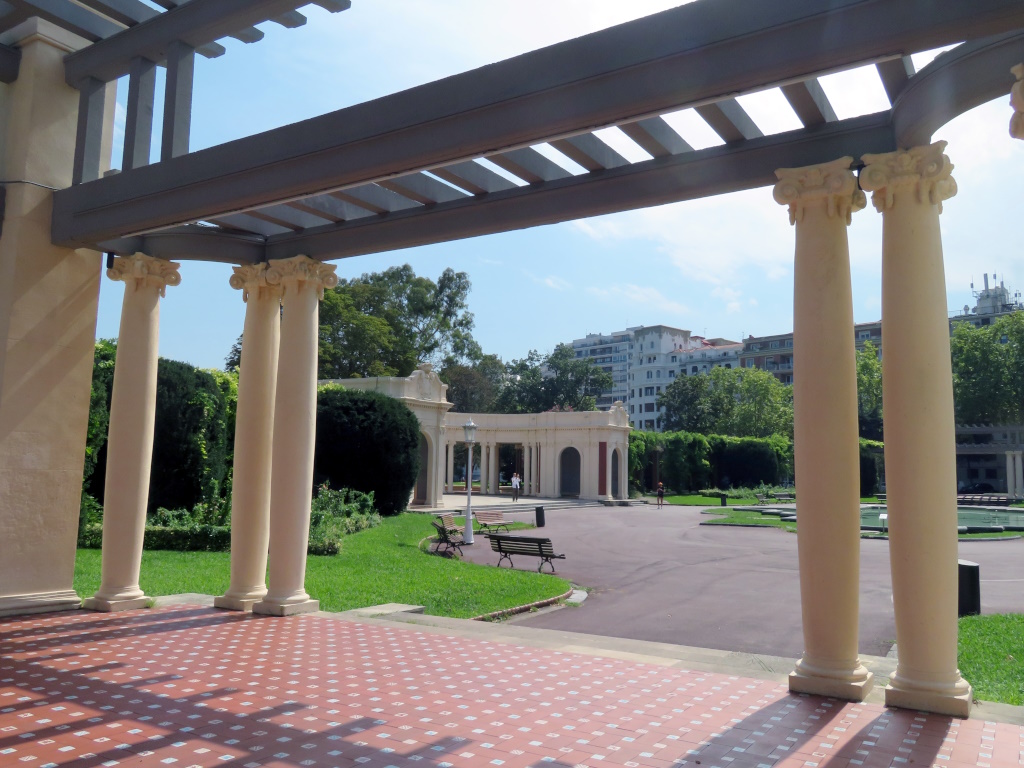
These are charming surroundings and of some interest on the way out is a temporary display, it's gone now, of photographs to celebrate Europa es Cultura, which isn't too difficult to translate because it hasn't got any zs or ks or xs in it.

They're the winning submissions to a competition, actually, on display here and in Madrid and it's not thought that all 60,000 entrants were vigorously vetted.
They're of a varying quality including a couple of overcast ones from the Scottish Highlands and if SlyBob had known about this we might well have ended up with some equally mediocre representation.
Some of your big hitters are hanging in this free-to-enter shelter from a shower and Goya, Gaugin and El Greco have most of the big Gs covered.

They might be proper paintings but have minimal wall space, if any from memory, and three rooms of abstract inflatables, a forgettable metaphor for something or other, are the only things remembered.
There's no sign of the advertised Velázquez, neither, and, just like the photographs in the park, Madrid is where his best bits are.
Picture the scene, a five-year-old Infanta, a princess if you like, is attended to by a handful of handmaidens and a bored-looking dog growls 'gerron with it' from the floor. Your focus is drawn by the excellent technique of the depiction of light but it's a posh, pampered child. Next!
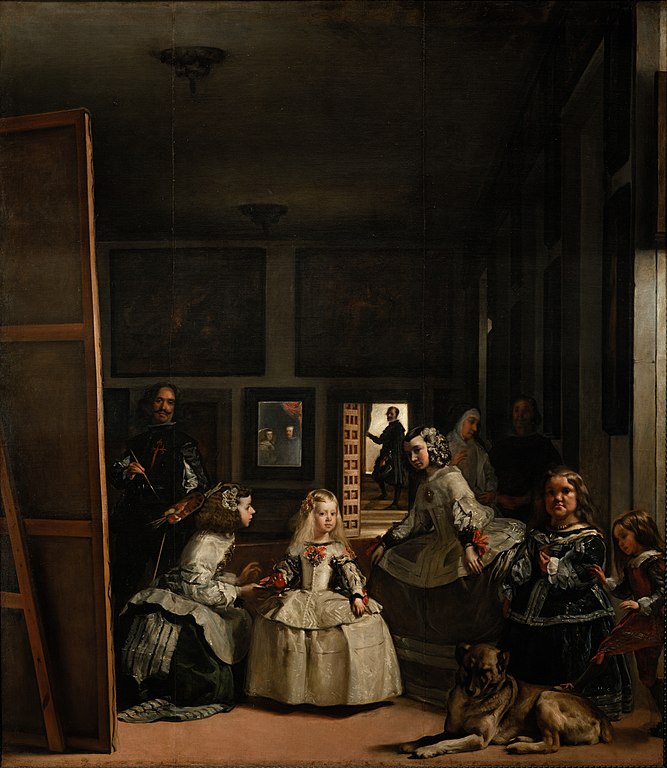
Look a little closer, however, and who's this fella lurking behind on the left? Why it's only Diego Velázquez himself and it looks like he's painting something? Look even closer and there's a small, mirrored reflection near the centre and is that, it can't be, King Philip IV and Queen Mariana of Spain?
This now takes the form of a royal portrait but what we're seeing is what they're watching while they wait for the paint to dry and the foreground scene is essentially incidental.
Yeah, but, what about when David Brent appeared briefly in the U.S. version of The Office meeting his recast character from the UK original? Velázquez painted this in 1656. Now that's what you call meta man!
There are all the visual delights you might expect in a newish continental city including the council offices with some fine, turn-of-the-20th-century showing off.
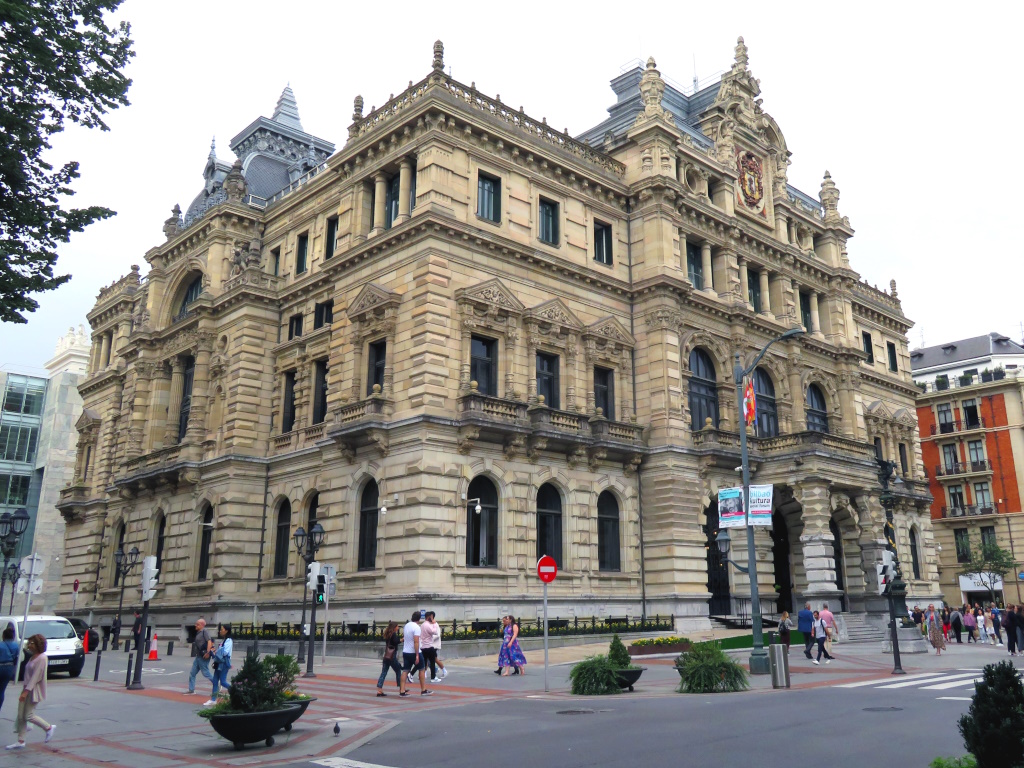
This sits on the Gran Via, everywhere in Spain has one, and it's a big old street, alright. It's not thought that Bilbao is the financial centre of the country but they love a bank here and there are more branches than you thought imaginable.
That means you won't be short of a Cashpoint™, which is still the preferred facilitator of future transactions just in case that contactless network don't work abroad and no one does travellers cheques no more, right boomers?
Starting off as simple tailors in 1930s Madrid, the English 'Cut' is a nod to the respected style of the time. This is now one of nearly 100 department stores nationwide and if you've ever been anywhere significant in Spain, this will be reassuringly familiar.
It's also a chance to stock up on tins of posh sardines since they invariably supply up-market nosh on the food floor. Here is no exception and with them being a bit of a Bilbao speciality, they're swimming with them upstairs.
You might be tempted to wander all the way to the top of the Gran Via, which is west, actually, and the monument marks the effective city limits for bumbling visitors. It's usually of some historical figure, often a founder or a reformer, but this one is just of Jesus.
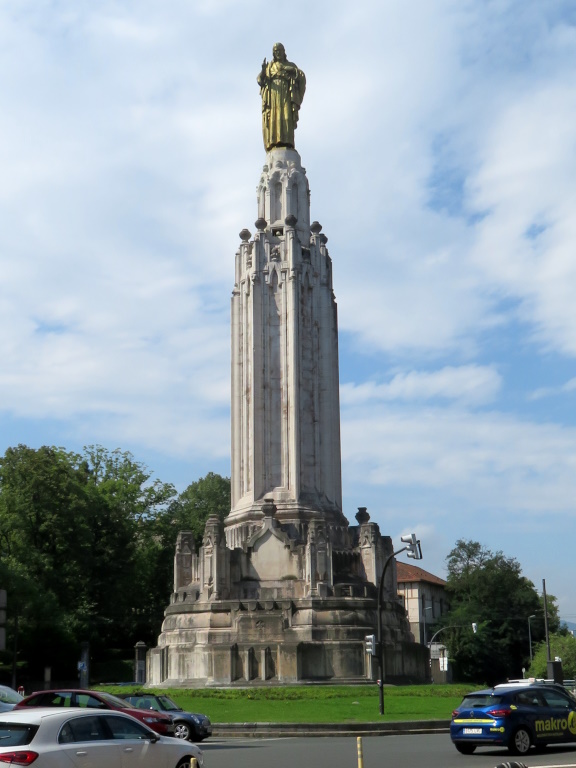
He's not the only Jesus that can currently be seen round this way. At least once a year, Seville's right back Jesús Navas might make an appearance when there's a match on. A match you say?
The San Mamés football stadium is another contemporary construction and replaced an older one on roughly the same spot in 2013.
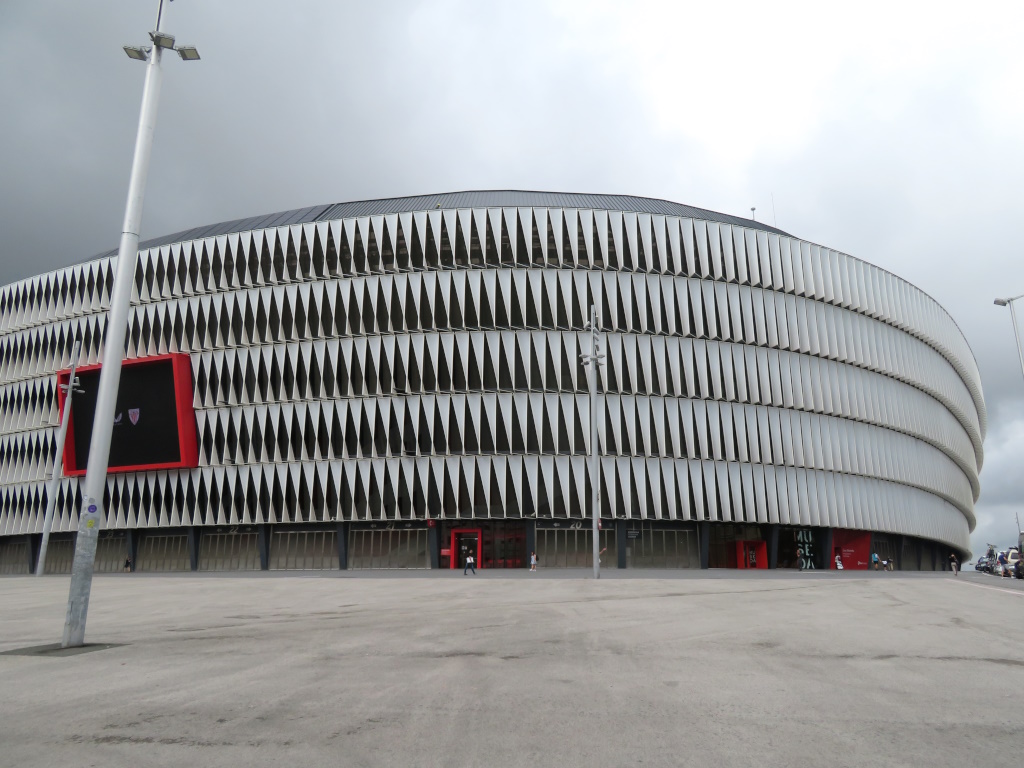

It holds 50-odd thousand and by the looks of it the same number of twisted, perspex panels that provide lighting effects when Athletic Bilbao score.
PEEP! What's that? The referee has just blown but not for offside and this is going to VARS, which in this case stands for Verify A Reasonable Statement.
They're not called Athletic Bilbao and no, it's not Atlético Bilbao just Athletic Club or more simply Athletic, you see. The dangling Bilbao is a legacy of the Franco regime who forced the name change to eradicate anything Basque and by that, it's meant written, spoken and even the use of personal names, post-Guernica and all that.
Now, football didn't really get going until the 1900s in Spain and with a 30-year head start in England, migrant shipyard workers are said to have had a hand in Athletic's creation.
Shipbuilders from Southampton or Sunderland are said to be the source of the red and white stripes in which they play but both can only dream of Athletic's sustained, relative success.
Along with Real Madrid and Barcelona, they're the only teams never to have been relegated from La Liga, Spain's top tier of football. All of this with a history of a Basque-only player policy, although that would likely be relaxed if Messi, say, was born just over the border.
It's like 11 cock-er-neys turning out for West Ham every week and isn't that remarkable Gary?
Heading east and slightly south of the Gran Via back to the centre, things are slightly more functional than the cultural creations and shrubbery north of it.
That is until you reach the old corn exchange, now transformed into a multi-purpose venue incorporating a cinema, library, exhibition areas and, most importantly, a gift shop.

Famed, French designer-come-architect Philippe Starck got the call and true to form has gone with an outside-indoors theme of industrial brick and it's all in, erm, Starck contrast to the curves and glass of the administrative building over the road.
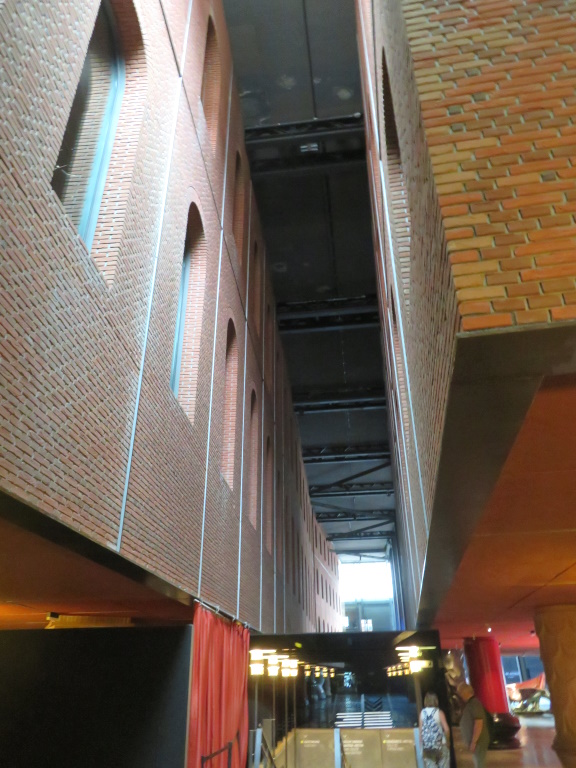
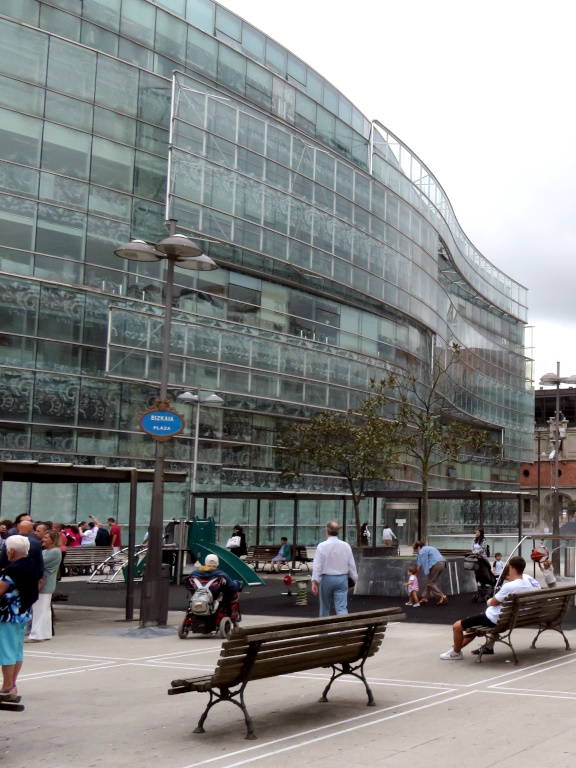

Modern pieces pepper the ample floor space and it's another example of Bilbao's post-industrial transformation. And to think back home, Wetherspoon™s would have got hold of this, put down a carpet and gone and called it the Corn Exchange (0/5).
As well as gawping at marvellous, modernist architecture and chugging txakoli with portions of pintxos in random plazas, that looks to be the new town done.
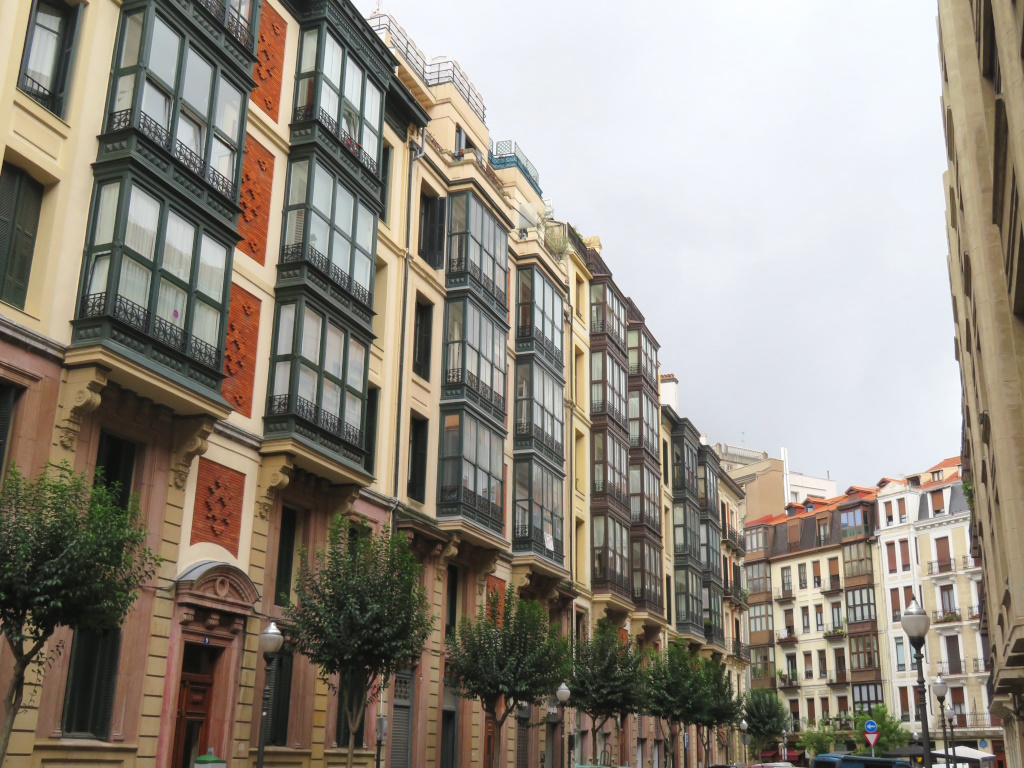
For a taste of the old, a river needs to be crossed and that'll be the River Nervión, of course.

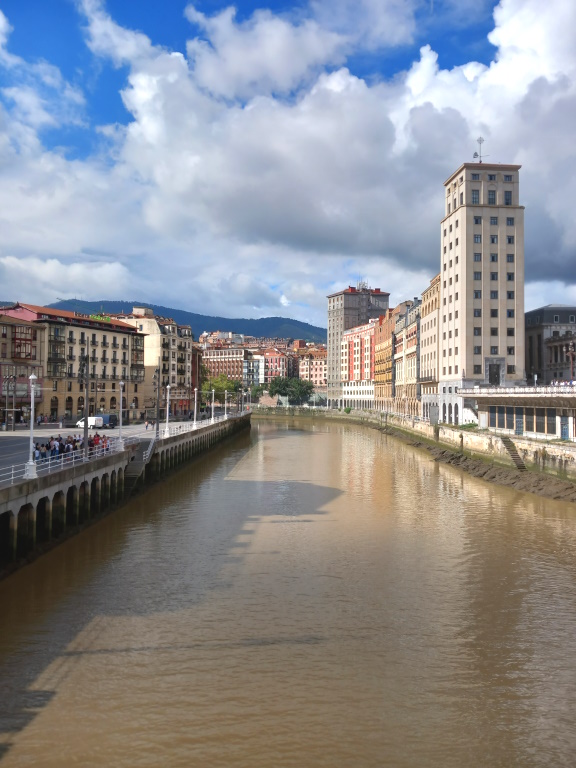
Rivers being rivers and valleys being valleys, that makes for some eventual elevation on both sides of the city. By that, it's meant what are essentially the foothills of the Picos de Europa to the west and the Pyrenees to the east, both significant providers of blinding peaks.
The mountains are mentioned because there's an option to survey Bilboa from up a height. If you look closely, there's the Guggenheim and the Iberdrola Tower and behind it, the San Mamés Stadium, which renders the eye-level experience of the last two days redundant.
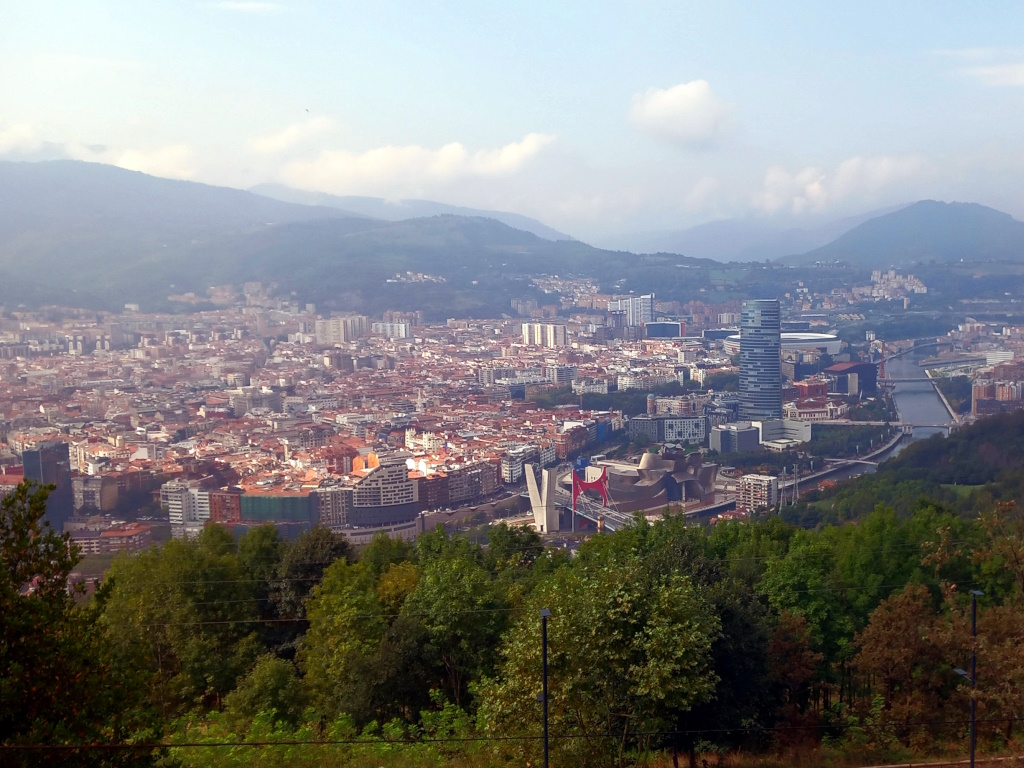
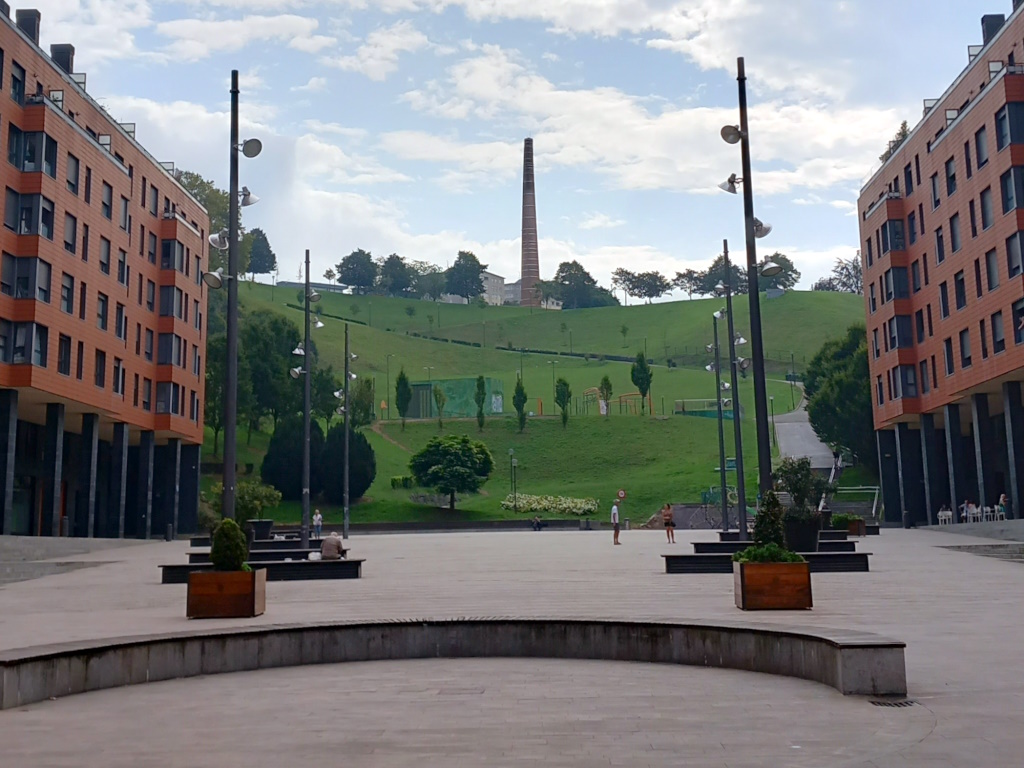
In the not-too-distant past, this might have involved a lug up through a park with a chimney in it, more post-industrial evidence of a clean-up this time of a former steel factory.
A handful of ascensors will help with a lift so far but the Artxandako Funikularra goes all the way.


Make sure you time this to avoid crammed compartments full of kids on a school trip but it's an otherwise popular and slick operation and, quite unlike the UK, isn't manned rather worryingly by a student with a wrench.
One of those public lifts would have been the Ascensor de Begoña, a concrete monstrosity \ brilliant bit of brutalism that pops into the eyeline every now and then.
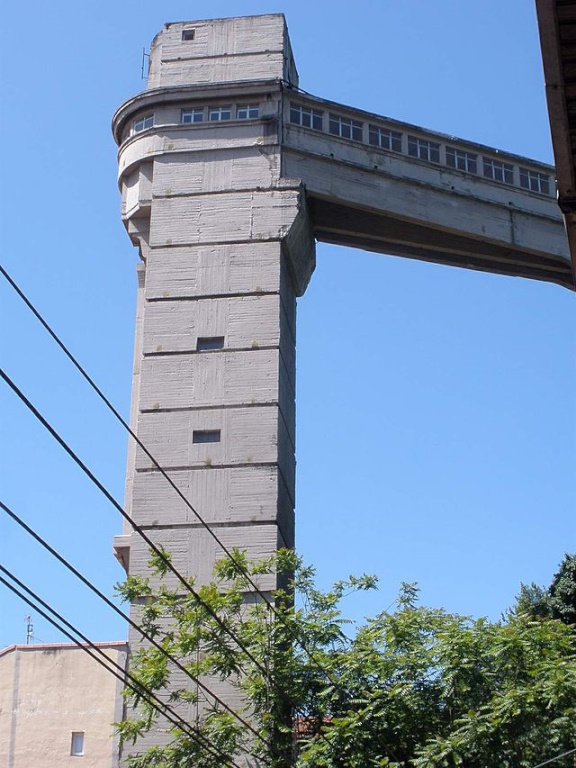
Following some form of dispute between the government and the operators, it now stands abandoned and acts as a spray paint recycling centre. Besides, they now have eco-friendly buses to run you back up the hill and it's mentioned for no other reason than some people kind of like this sort of thing, eh?
The circular garden up top provides near-panoramic views but you're advised to bring a packed lunch unless you're able to nick one off a kid on a school trip. El Txacoli restaurant-come-café doesn't do Wednesdays and the Miramar isn't returning any calls for a reservation.
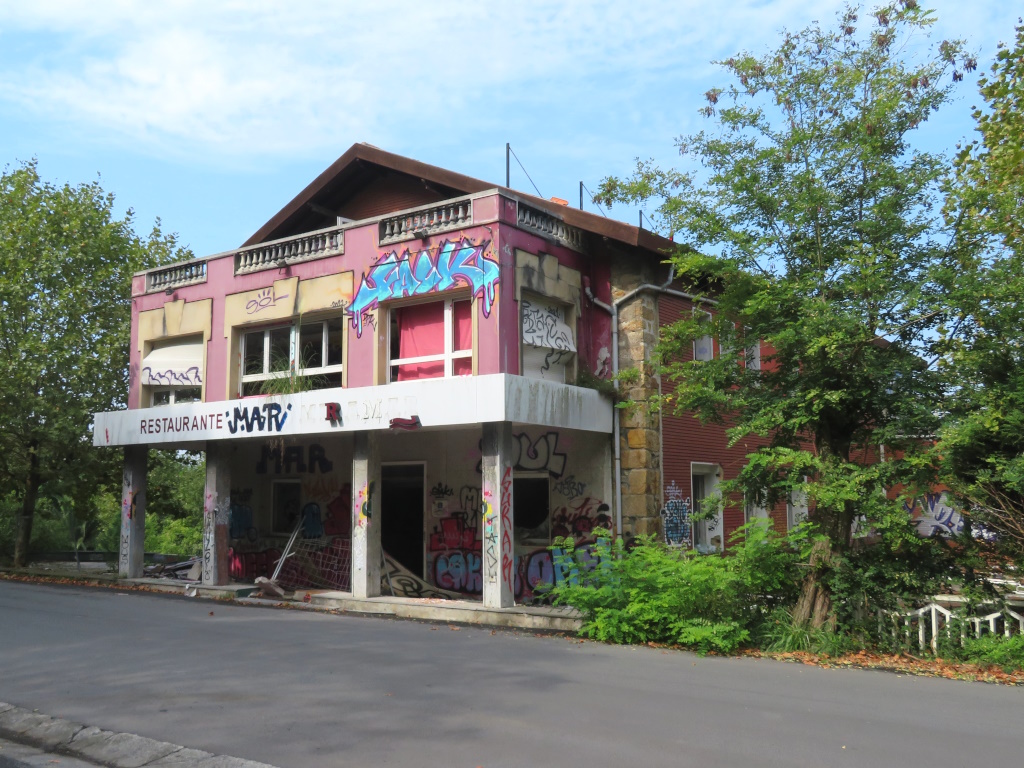
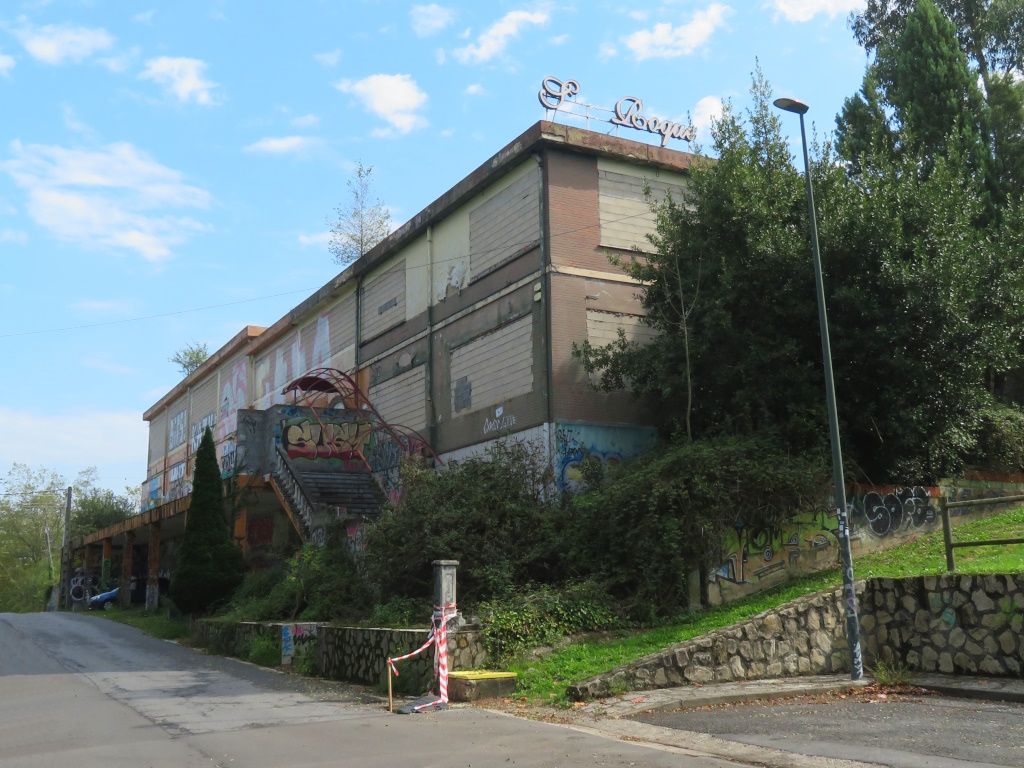
A boarded-up, likely-to-have-been nightclub and an abandoned hospital, not shown, suggest that living the high life never caught on up here and begs the question just how wild does it get in winter?
That shouldn't be of too much concern to the inmates, sorry, elderly residents, of a functional-looking facility. It's one of only a few signs of near-life away from the viewpoint and their views, disappointingly, are in the direction of an abandoned hospital, still not shown.
Meanwhile, back at sea level, depending on your direction, Bilbao City Hall and the Arriaga Antzokia or the Teatro Arriaga if you'd rather both tempt towards the old town.

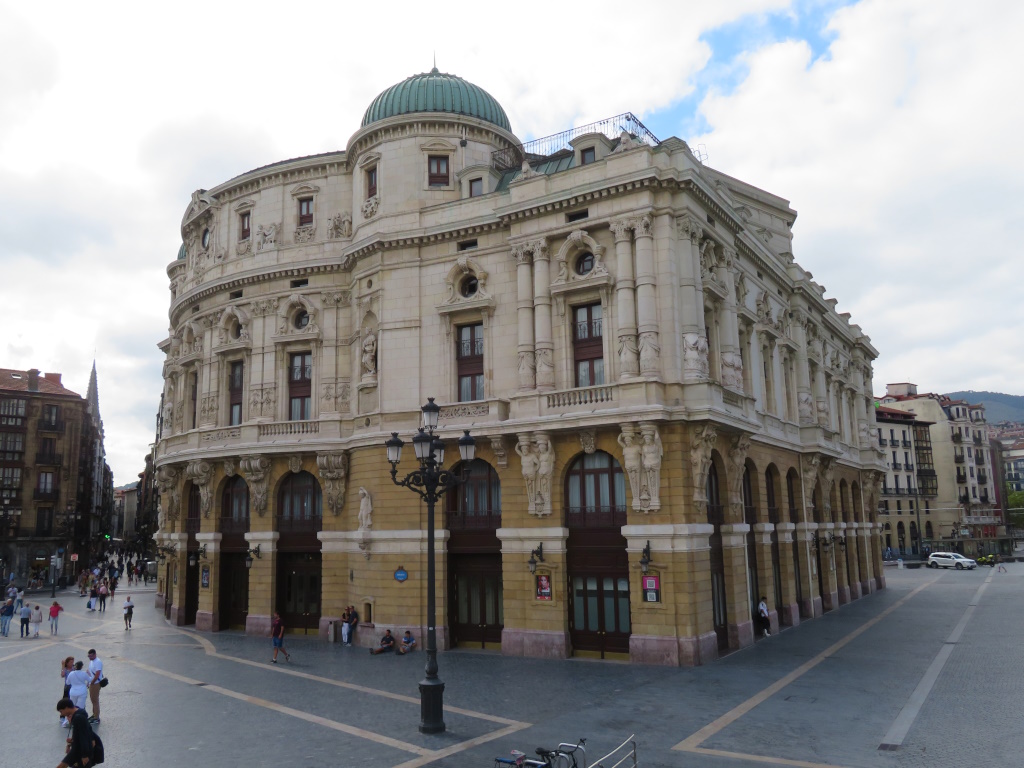
They're the work of the same architect who was a very busy boy in the decade leading into the 20th century. That means they can't really be classed as old and a lot of what has already been seen over the river isn't that much newer, neither.
That also applies to the Erribera merkatua or La Ribera market if you'd rather.
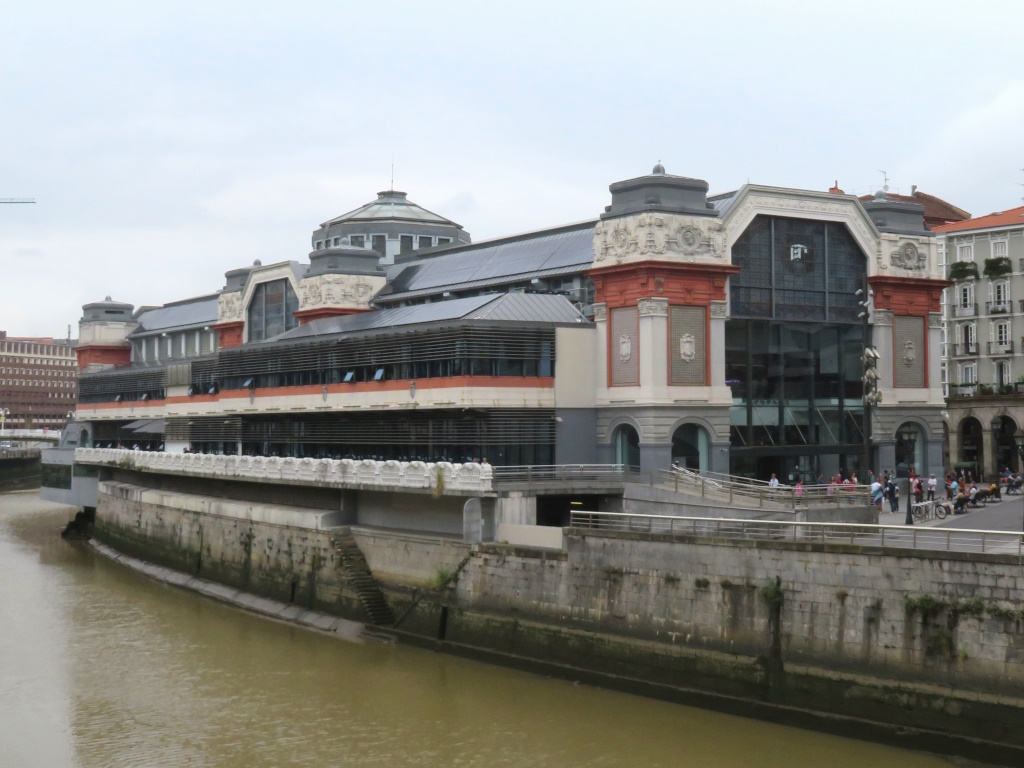
It's the largest covered market in Europe, they say, although SlyBob aren't entirely convinced by that, not unless we missed a bit of it?
Nevertheless, looking at some fish and meat in a city of this size is a must and by 'looking', it's not meant in a 'UURGH! What's that' or 'AARGH! They eat those bits here?' kind of way.
No, that stage has well and truly been passed and besides, there's often some good lunching with the locals close to hand confirmed by some unpronounceable Basque patisserie with a morning coffee.
What's thought to be the original stained glass provides light for the modernised interior although it's not thought that the signage is strictly necessary.


It's meat, fish, fruit and veg on both levels with just the sheep, seemingly, not allowed upstairs?
There's also some sort of ceremony today with interviews and TV cameras and SlyBob might well have made an appearance on the local BBC news later where that'll be the Bilbao Broadcasting Corporation, eh?
These are all distractions on the way to the old town as is an eye-catching piece of artwork on a portico ceiling opposite the market.
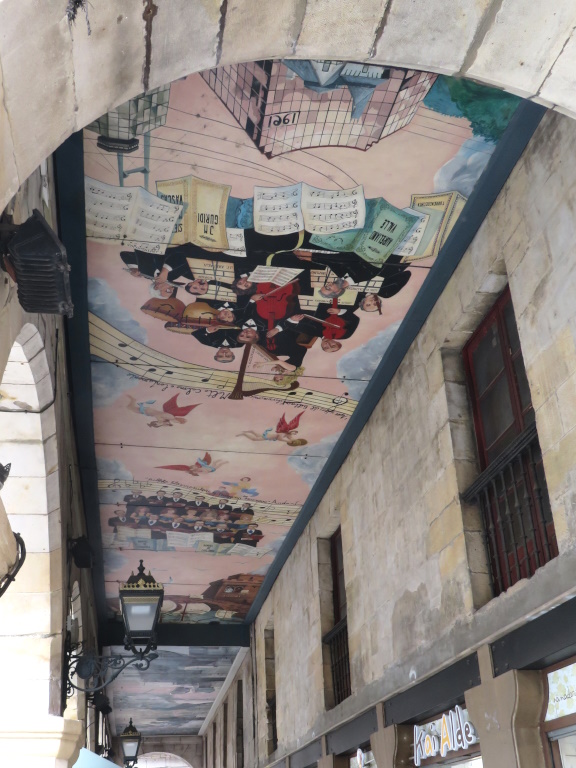
All of this before finally, you say, the much-touted old town and the Siete Calles, the seven original streets around which Bilbao was built around 700 years ago, they say.
These parallel, interconnected and pedestrianised lanes have everything covered from the artisanal to the knick-knack and in here is where Travel Mans Lycett and Acaster even bought their traditional, Basque berets, like you didn't watch it again before you came?

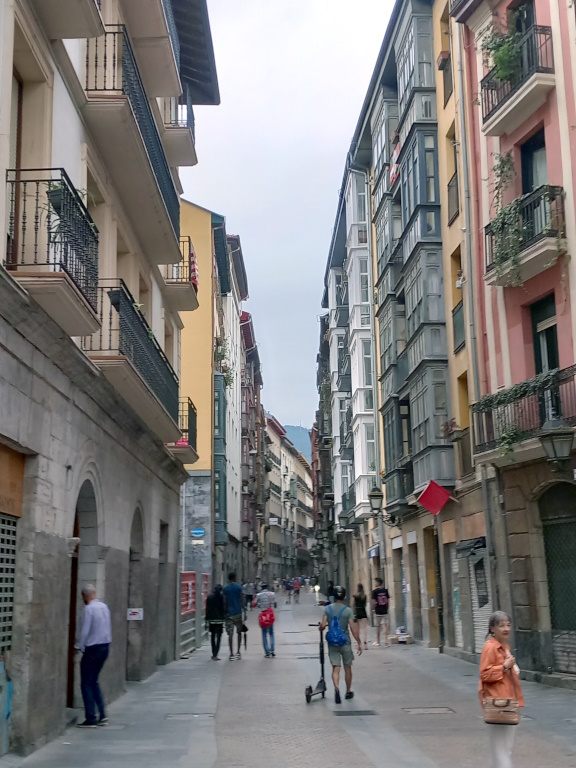
The streets are also identical meaning that you will be playing a game of 'Have we been down this one yet?' for at least a couple of afternoons.
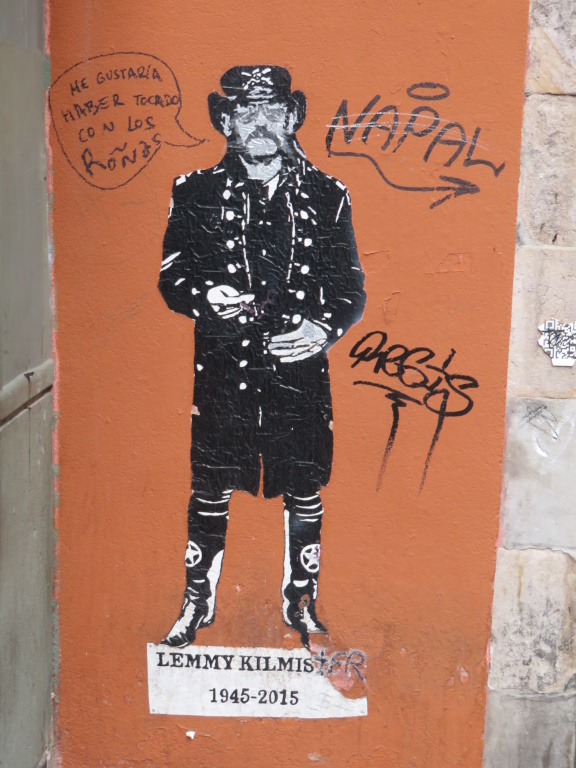
There's an old cathedral in here, somewhere, and it's easy to lose yourself but if you do you can always ask Lemmy, last seen in Buenos Aires, who wishes he had played with hardcore punksters Los Roñas, whoever they are?
All roads, though, ultimately lead, somehow, to Bilbao's most popular public space, probably, the Plaza Barria or the Plaza Nueva if you'd rather. It looks like this during the day but more like this just prior to a pantomime thunderstorm in the evening.
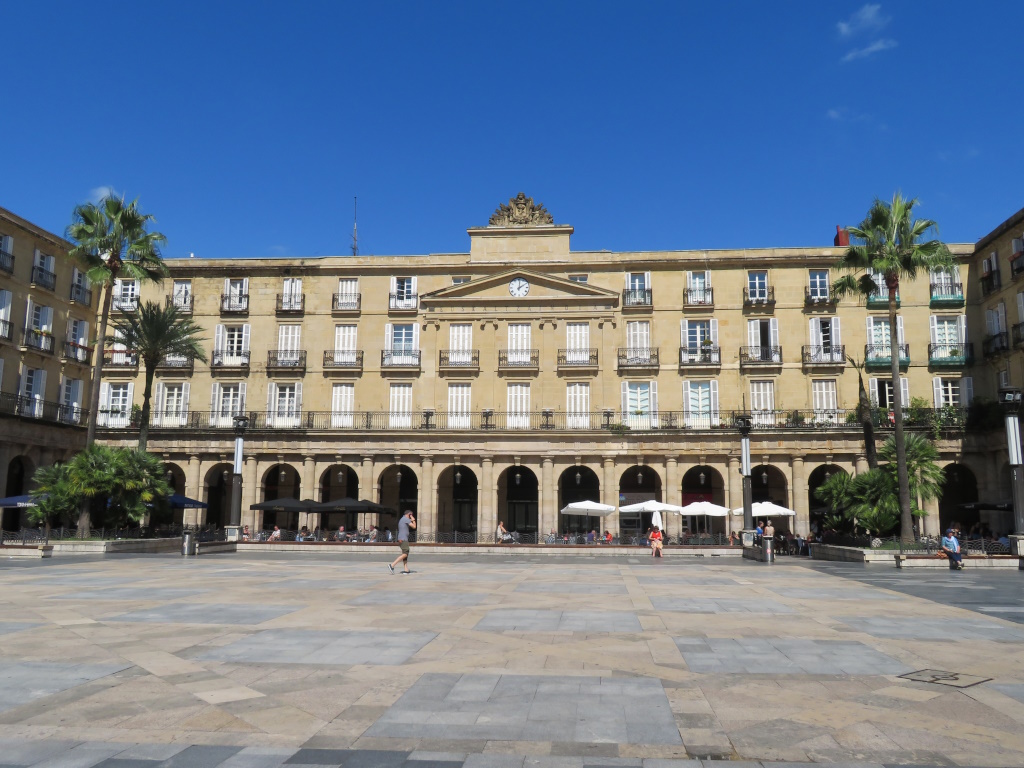
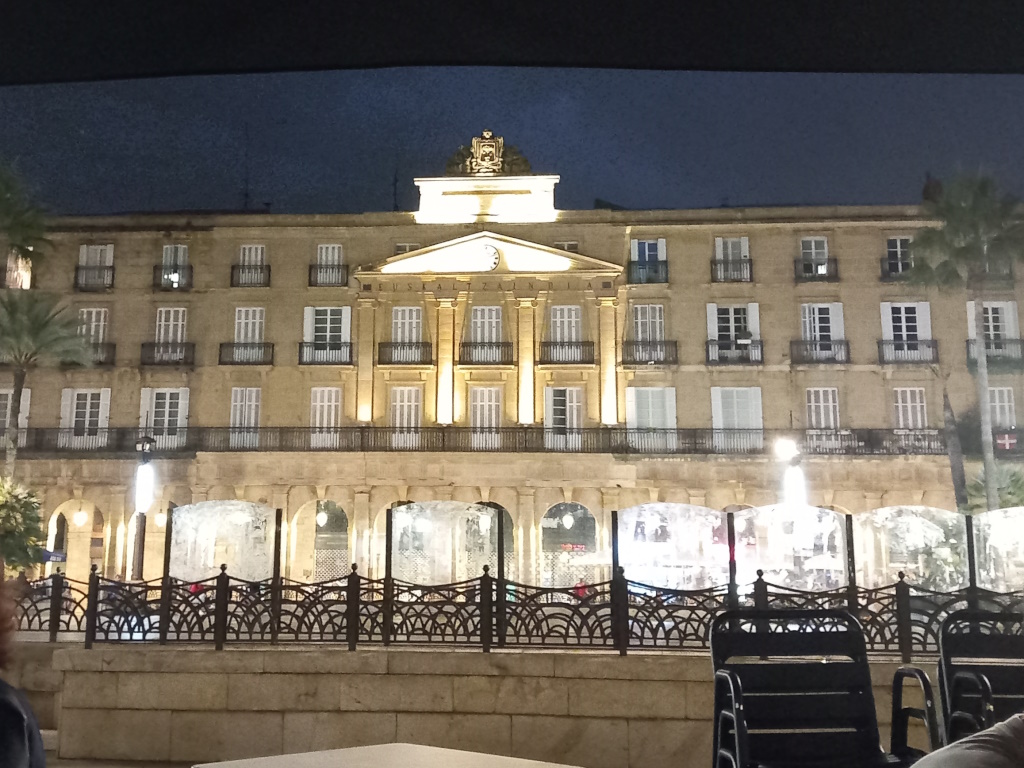
This neoclassical, it says here, square is more of a rectangle, really, but behind each arch of the colonnade is a fleshpot of some description, the vast majority of which are proferring pintxos.
Upstairs looks to be residential so they keep respectable hours and three young, English boozehounds are being encouraged to pipe down, this isn't Magaluf lads!
That's not to say this is a continental Shangri-La and earlier in the week some, erm, dispute saw windows being kicked but nothing a pair of local polizia with submachine guns couldn't soon subdue.
As for the pintxos, they're tapas 'pinched' with a cocktail stick, basically, but never say that to a Basque since there's great regional pride in this mode of munching.
Pick a couple from the counter with something to sip, no table service here, pop 'em in, drink up and move on. They vary in value and quality but are, on the whole, very moreish.
That means at the end of the night, your empty plate looks like you've just played a particularly long game of Ker-Plunk™, eh?
'Funky' and 'Chic' lodgings, they say, which essentially means a glass partition to the bathroom, outrageous! Still, it's handy if you plan on pintxos in the Plaza Barria every night and if not it's a short hop over the bridge to the trendier options of the new town.
They've also got a machine that emulates every arcade video game, ever, since the early '80s so that means no Galaxian™ and no Gorf™ neither, grrr! Still, if you're passing, pop in and see if Bob still has the high score on Galaga™, a far inferior sequel to the original, it's thought you'll agree.
